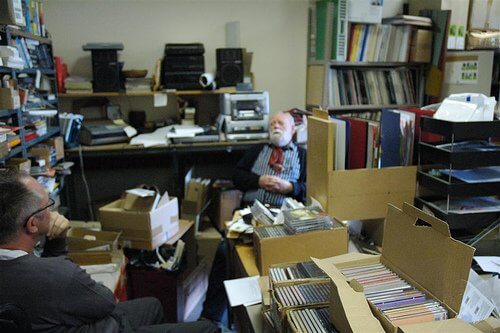5 Tips for Designing a Bad Office
1. Remove All Windows
Natural light can encourage greater productivity in employees, and the lack of light may otherwise cause morale to drop. So to keep your employees from being their most productive and satisfied, draw the blinds. Or cover up the windows with paper. Not only will employees not have to deal with that pesky sunlight cheering them up, their surroundings will be nice and uniform, unbroken by any glimpse of the outdoors.
2. Don’t Maximize Space
Another protip? Don’t pay attention to how employees use space. The company can afford to funnel money toward extraneous costs. Like the energy being used in meeting rooms that are only occupied a few times a month. Or the real estate costs involved with maintaining cubicles and desks, even when a fifth of the office telecommutes.
3. Don’t Pay Attention to What Workers Want
Surveys are for FMs who care about what employees want and need. So they’re not required for bad office design, although they might be useful in terms of making sure you do the exact opposite of what employees want.
If you don’t want to take the time to make a survey, though, you can do whatever you feel like: Use stiff or broken furniture. Paint the walls a drab color. Embrace an open-office format, without any separate private spaces. Convert the break room into a storage space—workers don’t need it, anyway.
4. Keep It Cluttered
One could argue that leaving a copier in the middle of a walkway could be more convenient. Workers’ cubicles or desks could always be pushed close together to make more room for said copier. And if there’s a little too much room in the walkway as a result, filing cabinets can always take up the extra space.
(Fire code? What’s that?)
5. Don’t Include Plants (Or at Least, Don’t Water Them)
Plants have the same effect as natural light, in that they also boost productivity. Plus, they’re said to have a filtering effect in the air, which leads to fewer office viruses and decreased absenteeism. Of course, there’s also the aesthetic appeal they add to the office in general. So to avoid all of these good effects, remove any plants from the premises. Or stop watering them. Either way will work.
There you have it: An easy, five-step plan for an office that’s a really unpleasant place to be. Follow these tips, and workers will be less happy and productive faster than you can say “file a formal HR complaint.”
Of course, if you follow our blog at all, you’ll know that all this advice goes completely against what we’ve discussed in the past. For some of the best practices on good office design, check out our past articles on natural light, the benefits of plants, and space tracking.
photo credit: Dubber via photopin cc




